Bodhipaksa's Blog, page 32
August 14, 2013
Meditation, technology, and Google Glass
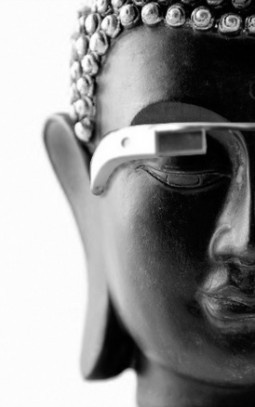 New Hampshire magazine had a nice piece on some of the meditation facilities and teachers available in the state, and part of the article was about my work.
New Hampshire magazine had a nice piece on some of the meditation facilities and teachers available in the state, and part of the article was about my work.
The Future of Meditation?
You’d think not much has changed about meditation in the two and a half millennia since Siddh?rtha Gautama sat beneath the Bodhi tree and attained enlightenment. After all, it’s hard to modernize a practice that involves little more than sitting down and shutting up.
But according to Bodhipaksa, the founder of wildmind.org, an online meditation resource, meditators have been early adopters of technology ever since the invention of the book. “The world’s oldest printed text was a Buddhist book.” He explains that they understood the potential. “Buddhists were on it, ‘Oh, this is a way to reach people.’”
Bodhipaksa (pronounced bo-dee-pack-sha) started Wildmind as a grad student in Montana when he realized meditators were falling behind the curve in the Internet age. Now from his offices in Newmarket he publishes guided meditations online and via CD and mp3. He leads live Google + hangouts where meditators chat (and meditate) together. People from as many as six different countries have attended online sessions.
“For some people the sun was just rising and for some people it was kind of late in the evening and for some it was right in the afternoon,” he says. “It was fascinating.” On the other hand he has at least one student who attends classes online from just up the road in Newmarket.
The wildmind.org website gets about a million and a half visitors a year, he says.
“Whenever new tools come out, my first thought is ‘how can I use this to reach more people?’”
He’s currently experimenting with Google Glass (pictured) and has found that it can be a tool for teaching good meditation posture and perhaps offer a view of a serene landscape to someone actually surrounded by a bustling environment.
With various apps and social media, it’s possible to find support and fellowship online. “Someone who is geographically isolated can feel the power of being involved in this community,” says Bodhipaksa.
“How can I use this to reach more people?” pretty much sums up my attitude to technology and meditation, although “How can this be used to teach meditation better?” is an equally important question.
I’ve had Google Glass for a month now, but for most of that time I’ve been involved in a rather intensive project to teach study skills and personal development skills (including meditation) to teens from low income families, in order to boost their chances of getting into college, and that’s slowed down my explorations of Glass as a teaching tool.
But I have found Glass to be very useful as a recording device. I recorded several of the guided meditations I led for my summer teens, and although for reasons of confidentiality I probably won’t be posting the video on Youtube, I plan to extract the audio and make that available.
I’ve also made a couple of initial explorations of the potential for using Glass to show how mindfulness can be practiced in daily life. For example I might be driving while wearing Glass (yes, it’s safe) and get stuck behind a garbage truck doing its pickup, and record just a 30 second video explaining the situation and showing how rather than getting impatient you can use the time to connect with your body and your breathing, and to experience gratitude that there are people who help make our environment a better place to live in. It’s very early days with these explorations, but I hope to post some videos along those lines before long.
Lastly, I’d like to express my gratitude to the many people who contributed to our Glass Buddha Project in order to help me buy Glass so that I could experiment with it. In particular I’d like to acknowledge the exceptional support of Adrian Lucas of Sassakala Microfarm. Sassakala promotes “urban homesteading” — creating vertical microfarms in tiny spaces. Earlier this year I visited Sassakala’s microfarm in Florida and was blown away by the amount of food that could be produced in a truly minuscule space. Please visit Sassakala’s site. You never know, it may bring out the farmer in you!
Related posts:
The Glass Buddha Project: Technology + Mindfulness = Awesome
Becoming a Google Glass Explorer
The Glass Buddha Project: an update
Related posts brought to you by Yet Another Related Posts Plugin.

August 9, 2013
Taking care of the present moment
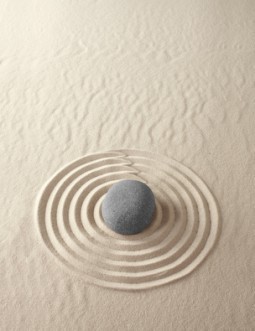 I’ve been having a well-earned rest from blogging after completing our 100 Days of Lovingkindness, during which time I managed to contribute a blog post every day, despite also, for the last month, having an intensive schedule of teaching and family responsibilities.
I’ve been having a well-earned rest from blogging after completing our 100 Days of Lovingkindness, during which time I managed to contribute a blog post every day, despite also, for the last month, having an intensive schedule of teaching and family responsibilities.
But practice goes on.
In the Wildmind community on Google Plus we’re working through a book called How to Train a Wild Elephant, which is an excellent book of mindfulness practices written by Jan Chozen Bays.
Week 2′s exercise is as follows:
Leave No Trace
Choose one room of your house and for one week try leaving no trace that you’ve used that space. The bathroom or kitchen works best for most people. If you’ve been doing something in that room, cooking a meal or taking a shower, clean up in such a way that you leave no signs that you’ve been there, except perhaps the odor or food or fragrance of soap.
(In Zen paintings turtles symbolize this practice of leaving no traces, because they sweep the sand with their tails as they creep along wiping out their footprints.)
So this has been very interesting for me, because I like to get things done, but I’m often so keen to move onto the next thing that I don’t finish off earlier tasks properly, and end up leaving paper and other objects lying around. There’s a sense of urgency and even anxiety about moving on to the next thing. There’s an anxiety to “get on with things.” When I’m doing one thing I’m already thinking about the next. And I don’t even finish that first task! I’m always leaning into the future, and away from the present.
The exercise is not necessarily about leaving no trace, though! When we tidy up a mess we’ve created in the past we are obviously leaving a trace, but we’re still doing the exercise, because “leave no trace” is really about bringing to completion tasks we’re working on now — for example putting the toothbrush away, the top back on the toothpaste tube, rinsing out and drying the sink — before moving (not rushing!) on to the next thing. The exercise is more about bringing task to completion, and about taking care of the present moment.
But when you start doing this exercise you realize how many tasks you currently have that are unfinished. So I ended up putting away laundry, putting away a bag I’d unpacked and left lying on the bedroom floor, tidying my desk, etc. In one sense I’m “leaving a trace” of tidiness, but on a deeper level I’m catching unfinished tasks that have left traces, and bringing the tasks home. And in so doing, the traces vanish.
The problem is that we live surrounded by the traces of half-finished tasks, and we take these traces for granted. So tidying up is, in fact, “leaving no trace.”
So I’ve been focusing on finishing tasks, whether I’m starting them now or whether I started them months ago and then left them incomplete.
I feel like I’m becoming more “upright” — standing in the present moment — as I leave no trace. There’s less leaning forward into the future, and more just being in the present. There’s less of that anxiety about getting on to the next thing. There’s more care and love. Something as simple as wiping down the sink after I’ve used it is like taking care of the present moment. Through doing this exercise I realize that I often see the present moment as an inconvenient obstacle that I have to rush through as quickly as possible in order to get onto more interesting future events. Now I’m finding that I like the present moment just fine!
You might want to take up the practice of leaving no trace, even just for a week, just to see how it goes.
Related posts:
Taking care of the present moment
Back to the Present: How to Live in the Moment
Fake Buddha Quote: “The secret of health for both mind and body is not to mourn for the past, worry about the future, or anticipate troubles, but to live in the present moment wisely and earnestly.”
Related posts brought to you by Yet Another Related Posts Plugin.

August 2, 2013
Guided Meditation: Mindfulness of Breathing
 This is a guided meditation that I led this week in a Google+ Hangout (that’s a form of videoconferencing, if you’re not familiar with it) with some meditation students.
This is a guided meditation that I led this week in a Google+ Hangout (that’s a form of videoconferencing, if you’re not familiar with it) with some meditation students.
After 100 Days of Lovingkindness practice I felt the need to get back to exploring mindfulness of the breathing again.
The sound quality’s not perfect and the video is — well, there’s no video. Due to a technical problem of some sort the video stopped being recorded a few minutes into the Hangout, so I just took it out altogether.
Still, I hope you’ll enjoy and benefit from the talk and the practice.
Related posts:
Guided meditation on mudita (joyful appreciation)
Mudita Bhavana (Joyful Appreciation) guided meditation, led by Bodhipaksa (Day 65)
Guided compassion meditation (karuna bhavana)
Related posts brought to you by Yet Another Related Posts Plugin.

July 30, 2013
The Monologue of Ice, by Atta Kim
The Monologue of Ice: Four Days, Spring Picnic, by Atta Kim.
This is from 2011, but you may have missed it. The installation, in the Rubin Museum, NYC, was by Atta Kim, who is a South Korean photographer (born in 1956) who has been active since the mid-1980s.
As the work melted, visitors were encouraged to touch the ice and take away non-potable water from the pool on their way out of the museum, using small glass containers that were provided. It was the artist’s intention that the collected water be used to continue the cycle of renewal by watering a plant.
This installation was a beautiful illustration of impermanence, insubstantiality, and interconnectedness.
Related posts:
Surviving the ice storm
Bodhisattva at the Seattle Asian Art Museum
Becoming a Google Glass Explorer
Related posts brought to you by Yet Another Related Posts Plugin.

July 23, 2013
Download Wildmind’s FREE iPhone app
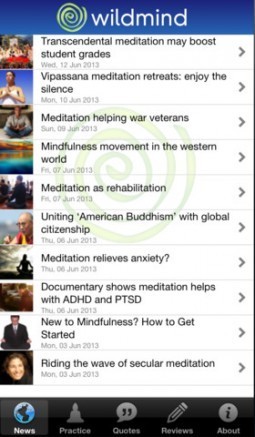 Wildmind’s first iPhone app is available for download from iTunes. And it’s FREE!
Wildmind’s first iPhone app is available for download from iTunes. And it’s FREE!
This is our first attempt at an app, and it’s very simple.
It simply takes the blog and presents the most recent posts from the news, on practice, reviews, and quote of the month categories.
So it’s simple, but it’s a nice way to read the blog.
And I like to think it looks nice, although I did the graphic design, so I’m biased.
The app was put together for us by Tony Paine, who is a software engineer in the Bay Area, and also a Buddhist who used to be part of the sangha at Aryaloka, my local Dharma center, until he moved west to go back to school and then for work.
Amazingly, Tony did the app development at no charge, and taught himself how to code iPhone apps just so that he could help us out.
There’s an FAQ page for the app here, if you want more information beyond what you’ll learn in iTunes.
We hope that version 2.0 will have additional features:
Forward articles by email, or to Twitter, Facebook, Google+, etc.
Favorite articles and save them to a list.
Download MP3 files and play them on a built-in media player.
View natively on the iPad rather than as an enlarged iPhone app
We’re also hoping to have an Android version before long.
So, please download our app to your iPhone (it’ll work on an iPad, but you have to enlarge it by hitting the x2 button) and please give us a rating! Obviously I’d be happiest if you gave it a five star rating, but please be honest. And please give us feedback and feature requests through the App Support page.
If you download the app and like it, please do remember to give it a review.
Related posts:
Meet Wildmind’s iPhone app!
Body perception (Interesting free video download from iTunes)
Wildmind in Zite’s Top Articles of 2012
Related posts brought to you by Yet Another Related Posts Plugin.

July 20, 2013
100 days of lovingkindness (and compassion, and joyful appreciation, and loving with insight
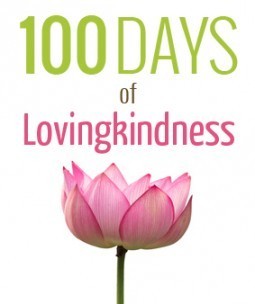 Today is Day 100 of Wildmind’s 100 Days of Lovingkindness.
Today is Day 100 of Wildmind’s 100 Days of Lovingkindness.
For me it’s been a blast. Somehow I managed to keep to a schedule of having a blog post each day, which means that I’ve written enough material in the last three months to fill a 300 page book. On our first 100 day challenge I managed 35 consecutive daily posts before realizing that I couldn’t sustain the pace and slacked off to writing every five days. Somehow this time the 35 day mark came and went, and then the 50 day mark, then 75 days — and here we are. The time has flown.
I can only imagine that the energy for this writing came from the practice itself. It certainly helped that we were focusing on one set of practices, rather than having just a general theme of meditating for 100 days. When you focus on one narrow topic it forces the mind to dig deeply, and as they say, if you want to dig a well you make one deep hole, not many shallow ones.
My understanding of the practices has moved on immensely. It may be that I’ve got things entirely wrong, but I realized that mudita is not “lovingkindness meets joy” as I had thought it to be, and realized that it was actually “lovingkindness appreciating and encouraging the skillful qualities that bring happiness.” And I came to see upekkha not as equanimity, but as the vipassana equivalent of mudita: “appreciating and encouraging the qualities of insight that bring lasting peace.” It’s always deeply fulfilling to look into familiar practices and to see them in a new light — especially one that brings traditional formulas to life.
My own practice? Well, there have been so many complications and stresses in my life with family and work (I won’t bore you with the details) that my meditation practice, although regular, has not felt particularly deep. But I have noticed a greater ability to be calm in the face of major challenges, and have definitely felt more compassionate and empathetic. I seem to have much more creativity, as witnessed by all this blogging.
Reaching Day 100 seems less like an end and more like the start of something. I’m looking forward to continuing to explore these practices, and to continue my writing (perhaps these blog posts will be an actual 300 page book at some point).
I’m glad to have been practicing with others. I’ve seen much kindness, compassion, and skillful rejoicing over the last 100 days, especially from members of Wildmind’s Google+ Community. And with permission, I’d like to leave you with some of their comments:
Adin: These last 100 days of have gifted me with an unshakable daily sitting practice, with a deeper understanding of this fleeting self, with more love for others, and with not just an acceptance of but a soothing, wiser appreciation of impermanence. I bow in deep gratitude.
Matthew: I’ve found myself deepening in compassion for both myself and others. I’ve always had major issues with self compassion but lately due to the practice of Brahmaviharas, I’ve noticed myself doing extra things around the house out of compassion for what situations may arise in the future vis-a-vis my health situation.
Melody: I’ve gone from ‘studying’ Buddhism out of curiosity to committing to this practice as a way of my life. I am immersed in the study of the words of the Buddha. I learned that I did not know how to love myself fully. I have committed to accept myself as I am here and now with present moment awareness. Applying compassion to myself changed the me I was familiar with, now things are bright and new and changing all the time. I found ill will to be too heavy and painful to carry and dropped it. Finally…I am growing an awareness of all beings and feeling a belonging I have never known.
Christine: This 100 days has completely upended my thoughts, feelings, and assumptions about metta practice, and about a lot of other things, too. (In fact, upending my thoughts, feelings and assumptions seems to have become part of my practice.) I used to fight shy of metta practice; now I love it. Curious and beautiful changes are seeping into my practice and my life as a result. All this is surely due to Bodhipaksa’s daily posts, for which I am profoundly grateful.
The 100 days project has taken me from an occasional meditator to someone for whom meditation has become a central part of life. I’m more aware of how I interact with others and find myself genuinely desiring good things for other people. Thank you so much, Mr. B, for guiding us through this process. Your words and example have been invaluable.
The 100 Days of Lovingkindness introduced me to the brahma-viharas (divine abodes, four immeasurables) expanding what I initially knew of metta, the lovingkindness meditation, exponentially. In learning the other aspects of lovingkindness, I truly see now just how much of a compassionate practice this is! I learned to root for others during their suffering, and during their successes. In honoring both, I also developed a deep desire that they have clarity. In particular, I applied these lessons at the source by learning to relate well to my own suffering. In doing so there was a letting go in which I found freedom. In finding freedom, I now desire it for all others.?
PS. You can see all of out 100 Days of Lovingkindness posts here.
Related posts:
Get started with “100 Days of Lovingkindness”
Getting started with lovingkindness (Day 1 of 100 Days of Lovingkindness)
Guided meditation on mudita (joyful appreciation)
Related posts brought to you by Yet Another Related Posts Plugin.

July 19, 2013
Knowing the mind of the Buddha
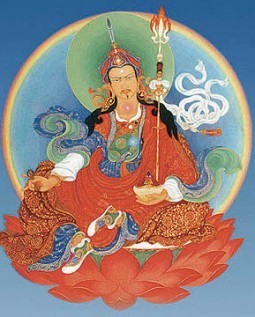 A little under two years ago I was on a retreat with other members of the Triratna Buddhist Order, which I’ve been a member of since 1993. We were discussing the visualization meditation practices we were each given at the time of our ordination.
A little under two years ago I was on a retreat with other members of the Triratna Buddhist Order, which I’ve been a member of since 1993. We were discussing the visualization meditation practices we were each given at the time of our ordination.
At the time of my own ordination, the practice I had requested and was formally given — the visualization of Padmasambhava — was described as being my orientation toward enlightenment. The visualized form of Padmasambhava — a red-robed figure with a trident and skull cup overflowing with the nectar of immortality — embodied my personal connection with awakening.
“Enlightenment” can be a rather abstract concept. How can we aim to attain a state if we have no feel for what it’s like to experience it? Imagine that you wanted to develop the quality of kindness, but had no examples of kind people to inspire you? Developing the quality of kindness wouldn’t be impossible, but it would be a lot harder. So it’s helpful to develop a clear and embodied sense of what an awakened being is like, so that we can resonate imaginatively and emotionally with it (which is now no longer an “it,” but a “he” or a “she”).
I started my contribution to the discussion without much enthusiasm, because my practice of the visualization of Padmasambhava had fizzled out a long time ago, and I didn’t feel good about that. When I was ordained there was a lot of stress put on doing the visualization practice regularly, and although I’d started off well, I found visualizing to be very hard. I’m actually a very visual person, but I had some kind of block regarding the practice.
 Actually, before my ordination, I had a very strong personal connection with Padmasambhava. I had many dreams about him, and sometimes when I looked at pictures of him I’d “hear” him speaking to me — often giving me very useful advice. (No, I’m not crazy; I’m aware this was really me speaking to myself.) I spent months sculpting his trident, which is very elaborate, and then rowed out into the middle of a loch in the Scottish Highlands and offered the trident up to the depths. My connection with Padmasambhava was a big deal for me.
Actually, before my ordination, I had a very strong personal connection with Padmasambhava. I had many dreams about him, and sometimes when I looked at pictures of him I’d “hear” him speaking to me — often giving me very useful advice. (No, I’m not crazy; I’m aware this was really me speaking to myself.) I spent months sculpting his trident, which is very elaborate, and then rowed out into the middle of a loch in the Scottish Highlands and offered the trident up to the depths. My connection with Padmasambhava was a big deal for me.
Somehow the meditation practice I was given interfered with all this. Struggling with the visualization made me feel that there was a barrier to communing with Padmasambhava, and gradually that sense of connection faded away, and I stopped doing the meditation practice.
And there was a sense of shame about my lack of fidelity that came up as I talked on the retreat about how I’d ceased doing this visualization practice. But as I continued to talk about how I’d been exploring alternative approaches to awakening that were more rooted in direct experience, I realized that I had never lost my fidelity to an underlying quest, which I expressed that day as wanting to know the mind of the Buddha.
This was the quest I’d been involved in even before I encountered the Buddha. Even in my teens I knew there was an alternative, more real, and more satisfying way to experience the world. There was a different way to see, and a different way to be. And I wanted to know what that was like. I wanted to experience the world that way — whatever “that way” was.
When I encountered the Buddha’s teachings — and even more when I encountered the Mahayana Perfection of Wisdom Sutras — I was aware of being in the presence of that different way of seeing. And I wanted to know the mind of the Buddha.
Although I’d stopped visualizing Padmasambhava, knowing the mind of the Buddha was always my goal. And my connection with Padmasambhava was just one particular way to seek that goal.
Now, just as mudita is the joyful appreciation of the skillful in others, where the good in us resonates with the good in others, so I believe that upekkha can involve valuing and appreciating the insight that others have. It’s that within ourselves that seeks insight resonating with the insight in others. Upekkha involves wishing the highest possible good — the benefits of awakening — for others. And so we naturally respond with gratitude, respect, and even devotion, to those who embody awakening. And that in fact is the point of the practice of visualizing enlightened beings.
The Buddha himself (or possibly his early disciples) seems to have encouraged this way of approaching awakening, and there was a practice that they called “Buddh?nusati” — reflecting on the Buddha and allowing ourselves to resonate with his qualities.
And I think that Buddh?nusati can be an important part of our upekkha practice. I discussed a couple of days ago how we have to be engaged in a quest for awakening ourselves before we can really wish awakening for others. And I think that it’s helpful, if we’re on a quest for awakening, to develop a sense of a personal relationship with awakening.
This doesn’t necessarily have to take the form of a visualization meditation. That didn’t work out well for me, although perhaps I gave up too soon.
It could take the form of having pictures of Buddhas and Bodhisattvas on our walls, or on our phones or computer screensavers.
It can take the form of reading the Buddhist scriptures (many are available free online) and allowing ourselves to get to know the Buddha from the records that have been passed down to us. This may not be an easy thing to do, because much of the depth of the Buddha’s personality has been flattened by centuries of oral repetition. But enough of the Buddha still shines through for us to have a sense of his extraordinary personality.
It can take the form of having a Buddha statue on the altar we meditate in front of. Don’t have an altar? I’d suggest putting one together. It doesn’t need to be elaborate.
It can take the form of bowing to Buddha images. Bowing doesn’t mean subservience. It’s simply a respectful greeting. And so every time I walk into a meditation hall, I bow. This reminds me of my debt of gratitude to the Buddha.
It can take the form of chanting verses. This is done in every Buddhist tradition that I know of. In the Triratna Buddhist Community of which I’m a part, we have a number of texts that we commonly chant together. Some can be downloaded here, and there are various recordings here. The earliest forms of Buddh?nusati seem to have involved chanting.
And lastly, you can do visualization practices. This doesn’t have to the done in a formal way, but can be as simple as imagining that the Buddha is sitting beside you when you’re meditating. I often do this. I don’t even necessarily “see” anything, so visualizing isn’t the right word. But just as you can know someone’s sitting beside you when you have your eyes closed, you can imagine someone sitting beside you while you’re meditating. There’s a feeling of a physical presence. And what I often do is to drop in the words “Feel the love of the Buddha.” So not only am I experiencing the Buddha sitting beside me, I feel him as a loving presence. Often this results in a feeling of warm on the skin of the side of my body that’s nearest to him.
So we seek to know the mind of the Buddha, to get close to him and to develop an appreciation and respect for awakened qualities — qualities which we ourselves are bringing into being. And in the upekkha bhavana practice we can wish that those qualities manifest in others, so that they know the peace and joy of awakening.
Related posts:
Not knowing how near the Truth is, people seek it far away
The expansive mind of lovingkindness (Day 23)
Bearing compassion in mind (Day 43)
Related posts brought to you by Yet Another Related Posts Plugin.

July 18, 2013
Cultivate only the path to peace
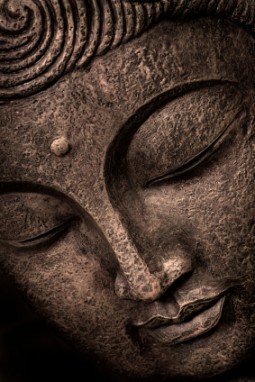 The Buddha was a man on a mission, and very single-minded. He said over and over again that his only interest was in addressing suffering:
The Buddha was a man on a mission, and very single-minded. He said over and over again that his only interest was in addressing suffering:
Both formerly and now, it is only dukkha that I describe, and the cessation of dukkha.
This word “dukkha” is often rendered as “suffering.” I have no real problem with that translation. It’s accurate. But many people have problems with the word “suffering.” As a friend and I were discussing just the other night, many people don’t recognize the suffering they experience as suffering, and so they don’t think that dukkha applies to them. Often people think of suffering as actual physical pain, or severe deprivation such as starvation, homelessness, or being in a war-zone. All those things are of course dukkha, but so are many others, some of which people might be reluctant to apply the label suffering to.
Often people don’t even see that they’re suffering; they’re blind to their pain. They so take it for granted that life is hard, or think that people and things around them are awkward and frustrating, and they don’t even give the difficulties they face a second thought.
The Buddha commented on this reluctance or blindness to dukkha:
“What others speak of as happiness,
That the noble ones say is suffering.”
We often think we’re OK, but actually we’re living at a sub-optimal level — far below our potential.
 For example, any kind of craving is dukkha, whether or not we want to recognize this. Even “pleasant” cravings like longing for a tasty treat, or longing for a new electronic toy are forms of dukkha. Look underneath the excitement of the wanting, and there’s a void that we’re trying to fill. Beneath the wanting is a want.
For example, any kind of craving is dukkha, whether or not we want to recognize this. Even “pleasant” cravings like longing for a tasty treat, or longing for a new electronic toy are forms of dukkha. Look underneath the excitement of the wanting, and there’s a void that we’re trying to fill. Beneath the wanting is a want.
Anger is dukkha, even when we enjoy getting angry. Frustration is dukkha. Irritability is dukkha. Resenting someone is dukkha. Worrying what someone thinks about you is dukkha. Hoping that the traffic light will stay on green is suffering. Wishing that the driver in front of you would go a little faster is dukkha.
We actually experience dukkha dozens, perhaps hundreds, of times a day. Dukkha is not an uncommon experience that only visits us on rare occasions. It’s woven throughout our experience and often goes unnoticed or unrecognized.
So some translators render dukkha as “unsatisfactoriness,” some as “stress,” some as “unease,” some as “anguish.” The root of the word is obscure, but it may come from dus-stha “unsteady, disquieted.” There’s no word that’s quite adequate. Personally, I find “suffering” to be fine; I just have a very broad understanding of what suffering is in my life.
So the Buddha taught about suffering. He taught about the ways in which we cause ourselves suffering, and the different ways in which we suffer, often without realizing it. And he taught about the cessation of suffering. He taught how to end suffering by attaining awakening.
But what are we left with when suffering has ceased? What is the opposite of suffering?
I suspect most people would think of “happiness” as the opposite of suffering, but “happiness” isn’t quite right. Happiness is not what Buddhist practice aims at. The goal of Buddhism, which is the spiritual awakening of bodhi, isn’t really happiness. I think of it more as “peace.” Think of the goal as the opposite of “unsteady” or “disquieted” — it’s steady, at peace, settled, quieted, calm, untroubled. Happiness may accompany this peace at some times, and not at others. It’s the peace that’s fundamental.
In the Dhammapada, the Dhamma is is said to be the path to peace:
Cultivate only the path to peace, Nibbana, as made known by the Sugata [Buddha].
And the Buddha is described as being supremely at peace:
Serene and inspiring serene confidence, calming, his senses at peace, his mind at peace, having attained the utmost tranquility and poise.
In our lives we’re often seeking happiness in some way or another. And a common assumption is that happiness comes from having pleasurable experiences. Buddhism points out, though, that there’s so much change and instability in the world and in our own beings that we can never guarantee ourselves a constant stream of pleasurable experiences, and so we can never find true happiness that way.
True happiness — or rather peace — comes not from having pleasant experiences, but from changing our relationship with our experience, whether it’s pleasurable or unpleasurable. It’s when we can completely accept pleasure and pain without responding either with craving or aversion that we find ourselves at peace. So this insight changes everything. Most of our pleasure seeking, most of our pursuit of happiness, is actually causing us more dukkha, because we’re aiming to keep at bay unpleasant experiences and hold onto pleasant ones. And both of these aims are impossible, fruitless, and frustrating — dukkha, in short.
Peace and joy come not from the experiences we have, but from how we relate to those experiences. Our experiences are inherently unsatisfactory (another meaning of dukkha), and we need to stop chasing after them or resisting them.
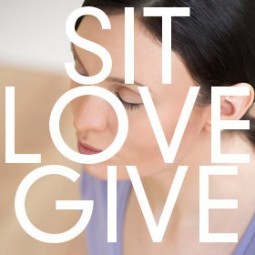 If you benefit from this work, please consider supporting Wildmind. Click here to make a one-time or recurring donation.
If you benefit from this work, please consider supporting Wildmind. Click here to make a one-time or recurring donation.It’s only learning to accept impermanence, and developing the ability to bear with our experiences non-reactively, that will bring peace.
So we need to remind ourselves of this all the time, so that we can find peace. And we also need to bear in mind, as we’re interacting people or cultivating metta, karuna, mudita, or upekkha for others that they too are often trapped in cognitive distortions — seeking happiness but not knowing how to create it; trying to avoid suffering and yet creating suffering inadvertently. And in the upekkha bhavana we can look out into the world and be aware of beings striving, blindly, for happiness. And we can wish that beings (ourselves included) develop the clarity and wisdom to be able to create peace — genuine peace — the peace that comes from awakening.
Related posts:
Lovingkindness as a path to awakening (Day 25)
Radiating peace (Day 87)
Conceiving of the goal
Related posts brought to you by Yet Another Related Posts Plugin.

The value of guided meditations…
 Recently I was interviewed by Hannah Atkinson of Windhorse Publications in the UK. I’m one of their authors, but she was curious to know more about the guided meditation CDs and MP3s that I’ve published through Wildmind.
Recently I was interviewed by Hannah Atkinson of Windhorse Publications in the UK. I’m one of their authors, but she was curious to know more about the guided meditation CDs and MP3s that I’ve published through Wildmind.
Here’s the start of our conversation:
You have produced a large number of guided meditation CDs and you also run a huge online meditation teaching resource, Wildmind. What is the ethos behind your emphasis on audio and online meditation teaching and why do you think it is so important?
Well, it’s something I stumbled into really about 13 years ago when I was doing my Masters degree at the University of Montana. I was wondering about how to teach and I started thinking about the potential of the internet to reach people. Back then there was nothing much on the internet about meditation at all, so it seemed like a really exciting thing to do. I started making meditation courses with audio and text available online and then the CDs just grew out of that really.
So I think that audio and online meditation teaching is a really great way of reaching lots and lots of people and it is also a really great way of reaching people who would have difficulty getting good instruction elsewhere. Perhaps in Britain there are people who don’t have their own transport and who have to travel 20 miles to go to a meditation class, but in the US it’s not uncommon for someone to be several hundred miles from their nearest Buddhist centre…
Visit Windhorse’s blog to read the whole interview…
Related posts:
Guided compassion meditation (karuna bhavana)
“May all beings dwell in peace”: A guided meditation (Day 91)
Guided Upekkha Bhavana (Cultivating Evenmindedness) (Day 77)
Related posts brought to you by Yet Another Related Posts Plugin.

July 17, 2013
Going all the way… (Day 97)
 I’ve been talking about the “divine abiding” of upekkha as being not equanimity, as it’s usually translated, but something that’s much warmer and more compassionate and supportive.
I’ve been talking about the “divine abiding” of upekkha as being not equanimity, as it’s usually translated, but something that’s much warmer and more compassionate and supportive.
Equanimity suggests standing back, but the word upekkha means “closely watching.” I see upekkha as an intimate identification with beings’ deepest needs, and our desire that they experience the peace of awakening.
Just as mudita is when we want beings to develop skillful qualities and the peace and joy that comes from those qualities, so upekkha is when we want beings to develop insight, and the peace and joy that comes from that insight.
Upekkha is what the Mah?y?na came to call mah?-karun? — great compassion — in contrast to the brahmavihara of compassion, which is a simpler desire to relieve beings of suffering.
Because upekkha means wishing that beings awaken, you might make an assumption that upekkha is something you can’t really get into until you’ve gained some insight or had some deep experience of deep peace ourselves, but I don’t think that that would be a helpful or correct assumption. We can want the peace and joy of awakening for ourselves and for others without actually having experienced it. In fact it’s inevitable that this is the case. We’re always seeking some peace that is not yet ours. We can’t, by definition, know what awakening is like until we’ve experienced it. We don’t even know what is going to bring insight about.
 But we can have a sense of the direction we want to head in. We can have a sense of what we want to move away from — craving, aversion, and the suffering they bring. We can have an emerging sense of liberation from suffering as we learn to let go, to notice our experience mindfully and non-reactively, and to develop greater compassion. This amounts to a sense of direction, with a destination that’s essentially unknown.
But we can have a sense of the direction we want to head in. We can have a sense of what we want to move away from — craving, aversion, and the suffering they bring. We can have an emerging sense of liberation from suffering as we learn to let go, to notice our experience mindfully and non-reactively, and to develop greater compassion. This amounts to a sense of direction, with a destination that’s essentially unknown.
This is one of the odd things about practicing the Dharma; we don’t really know what the goal is. The Buddha certainly didn’t say a lot about what the experience of being awakened was like. He talked about it as being beyond the scope of words to describe, although he did repeatedly describe it as being blissful, joyful, and peaceful. So all we have to go on is hints, and a promise of some experience very different from our own.
Blind faith? Sometimes it might be, but essentially it’s confidence and trust (two words that in some ways translate “shraddha” better than “faith”) based on experience. If you’ve followed the guidance of the Buddha and found that meditating and living ethically have brought more of a sense of meaning, peace, and sometimes joy into your life, then you have some experiential basis for trusting that maybe this guy knew what he was talking about. And if he talked about a goal that’s the ultimate in peace and joy, however obliquely, then there’s some basis for trust — or “faith,” if you like.
And if we want to experience goal for ourselves (so to speak, since it’s not something that can be grasped or possessed), we can compassionately want others to experience that goal.
So we don’t have to have experience of the goal to be in a position to want it for others.
It’s not that we go all evangelistic and start pestering everyone we meet, asking them if they’ve “heard the word of the Buddha” and pressing little tracts into their hands. But we can learn to relate to others on the basis of what they can become, rather than on the basis of whatever constellation of habits and traits they happen to be right now. We can view others lovingly and compassionately, valuing their potential, and being an encouraging presence. This is the “close watching” of upekkha.
We don’t need to have experienced awakening to have upekkha, but one thing we do need is a desire for awakening. You can have lovingkindness for others — wishing for them to be happy — without personally feeling any connection with the goal of awakening, or enlightenment. You can have compassion for others — wishing for them to be free from suffering — without thinking about enlightenment at all. And similarly you can have mudita, and want others to become skillful and experience the peace and joy of a skillful life, without wanting to be enlightened. But I don’t think you can wish awakening for others unless you wish it for yourself.
And this is something that’s often strangely lacking in many Buddhists. Many of the practitioners I’ve met want to be better people. They want to be happier. They want to cause less suffering to others. But their ideals are very much rooted in puñña, or merit — becoming an incrementally better person by developing skillful qualities — rather than in pañña, or wisdom, which is a radical shift in the way we see ourselves. It’s quite common for Buddhists not to think about awakening, not to talk about awakening, and even not to think that awakening is a realistic possibility for them. In fact they might be quite clear that they think they’ll never have an insight experience.
 If you benefit from this work, please consider supporting Wildmind. Click here to make a one-time or recurring donation.
If you benefit from this work, please consider supporting Wildmind. Click here to make a one-time or recurring donation.But awakening is the whole point of Dharma practice. And it can happen to anyone. It can happen anytime. I doubt if there’s a single person in the world who, in the moments before they had an insight experience, was thinking, “OK, I think enlightenment’s about to happen … wait … wait .. right, there it is!” Awakening always comes out of the blue. It’s always a surprise, or even a shock. And we should be open to the possibility of awakening happening to us. Not that we should expect anything to happen, but we should have the general aim of cultivating insight experiences. And we should be doing what it takes to awaken — not just living ethically and cultivating mindfulness and metta, but examining the impermanent, non-self, and unsatisfactory nature of our experience. We should be tilling the soil, planing seeds, and watering those seeds. You can’t make the plants grow through some act of will, but you can aim to grow a garden.
In fact, all this should increasingly become central to our lives. We should see ourselves as Buddhas in training. We should aim to go all the way to awakening. If we don’t have that aim, then how can we have that wish for others, and help them to free themselves from suffering? If we don’t ourselves have the desire to go all the way to awakening, how can we take others with us?
PS You can see all of our 100 Days of Lovingkindness posts here.
Related posts:
“May all beings dwell in peace”: A guided meditation (Day 91)
Looking into the heart’s depths (Day 92)
“There is never any need to get worked up or to trouble your soul about things you can’t control.” Marcus Aurelius (Day 80)
Related posts brought to you by Yet Another Related Posts Plugin.





